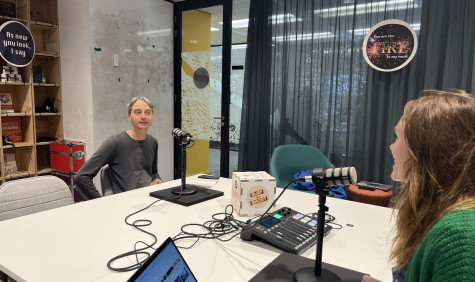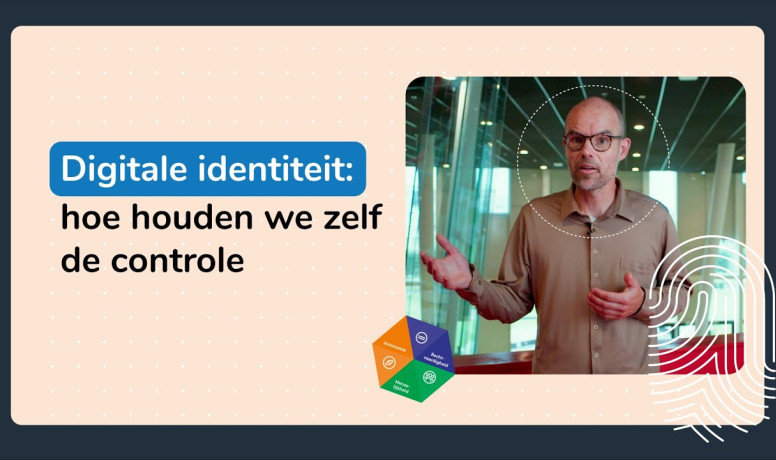What you need to know about... open source
Proponents have long agreed. Open source applications are the future for maintaining freedom and control in a digital world. But what exactly is it? And why is it so important? And how does it resist undesirable situations such as vendor lockin?
Listen to the podcast now via your favourite podcast channel:
1. Introduction (0:00 - 0:16)
- Host: Sanne Koenen.
- Guest: Thijs Kinkhorst, Technical Product Manager at SURF.
- Topic of this episode: open source.
2. What is Open Source? (0:17 - 0:48)
- Open source software provides access to the software's source code.
- Difference with closed software: you cannot modify the code with closed software.
- It offers more control and independence for users.
3. Pros and cons of open source software (0:49 - 1:58)
- Open source can be seen as complicated because of technical knowledge that is sometimes required.
- However, there are always vendors available to help.
- You are not dependent on one supplier as with closed software.
4. Examples of vendor lock-in (2:00 - 3:58)
- Example: Oracle's Java licensing terms and the costs involved.
- With open source, you can easily switch to alternatives as SURF does with Java.
- Vendor lock-in is a big problem, but with open source you can always switch to another vendor.
5. Revenue models for open source (4:11 - 5:42)
- Support, implementation and customisation are the main revenue models for open source software.
- The software itself is often free, but services around it can generate money.
- Open source organisations can be financially sustainable through these models.
6. Misconceptions about open source (5:44 - 6:28)
- The idea that you need a lot of in-house programmers to use open source is a misunderstanding.
- Vendors can provide support and deliver software without vendor lock-in.
7. Experiments with open source within SURF (8:55 - 9:44)
- SURF is conducting experiments with open source alternatives such as Nextcloud.
- The aim is to find real alternatives to the dominance of large technology companies.
8. Future vision: alternatives to Microsoft Office? (10:06 - 11:01)
- It is possible that more alternatives to large software packages such as Microsoft Office will emerge in the future.
- Open source offers more flexibility in use and customisation.
9. Risks of power at open source companies (11:28 - 13:05)
- Although open source companies can become large, it always remains possible to spin off or switch suppliers due to open protocols.
10. Conclusion and Recommendations (13:31 - 15:01)
- Recommendations for institutions to explore opportunities with open source.
- Reference to SURF videos on digital identity and maintaining control.
What you need to know about open source
Open source software is gaining ground in education and research, offering institutions more control over their technology use. In the latest episode of our SURFshort podcast, listen to Thijs Kinkhorst, Technical Product Manager at SURF. Thijs talks about the advantages of open source, avoiding vendor lock-in and the misunderstandings about it. In this summary of the podcast, read the main points from the episode, including additional sources and background information.
What is open source?
Open source software is software whose source code is publicly available, allowing users to modify and improve it. Unlike closed software, where you can only use the functionality without having access to the code, open source software allows users to customise it to their specific needs. This increases independence and flexibility for institutions.
Advantages of open source: no vendor lock-in
One of the main advantages of open source software is that it prevents vendor lock-in. Vendor lock-in means that organisations are stuck with one supplier, which limits flexibility and can lead to high costs, for example if the supplier changes the licensing terms. A well-known example of this is Oracle's Java licence change, which surprised many institutions with a sudden increase in costs. Open source software allows institutions to switch to alternative solutions without being dependent on one supplier.
Misunderstandings about open source: you don't need a big IT team
A common misunderstanding about open source is that you need a large team of programmers to use it. In reality, many open source software suppliers offer support and implementation services, without institutions needing to have much technical expertise on-premises themselves. By using these services, organisations can enjoy the benefits of open source without the technical complexity.
Examples of open source alternatives
At SURF, we actively experiment with open source software to determine which solutions are suitable for education and research. One example is Nextcloud, an open source alternative for cloud storage. Nextcloud offers flexibility and control over data. Solutions like this help institutions avoid dependence on large tech companies, without having to compromise on functionality.
Earning models for open source software
Open source software is often available for free, but that does not mean there are no sustainable revenue models. Vendors can generate revenue by offering services such as support, customisation and training. These models ensure that open source projects can continue to grow and improve, while users benefit from lower costs and more flexibility.
The future of open source in education and research
The potential for open source software in education and research is great. As institutions experiment more with alternatives, as we do at SURF, it becomes clear that open source solutions are often not inferior to commercial software. Indeed, they offer more freedom to adapt software to specific needs. Therefore, we expect that the use of open source will only increase in the future, partly thanks to the growing community and the development of increasingly sophisticated tools.
Also watch the video 'digital identity: how do we keep control ourselves'.
Want to read more on this topic? Thijs passed on these links after the broadcast as interesting reading material:
You may also find this interesting
Podcast
What you need to know about... PeerTube
The debate around social media and their powerful owners is heating up. It is time to take back control and look for decentralised alternatives. PeerTube is one such alternative for video content. Find out exactly how it works and what you can gain from it from Alexandra van Straaten, social media advisor and privacy coordinator at SURF.Article
Researchers log in quickly and securely with eduID at SURF Research Cloud
In SURF Research Cloud, thousands of researchers work together. Not all researchers have an institutional account, but with an eduID they can still access SURF Research Cloud quickly and securely. Ivar Janmaat of SURF explains how this works. Together with his team, he developed SURF Research Cloud.Case study
Naturalis gives researchers control of their projects with SURF Research Access Management
In this case story, read why and how Naturalis uses SURF Research Access Management for their researchers.

